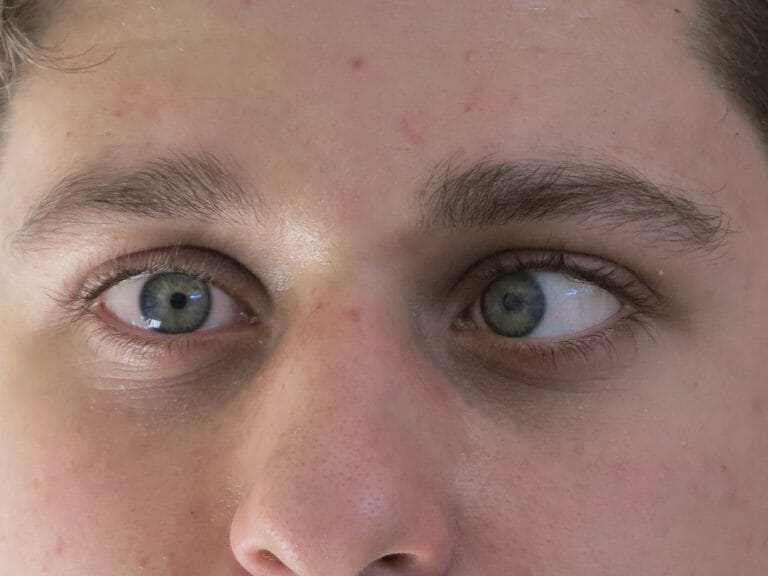Strabismus is a visual disease in which the eyes don’t align with each other, making it impossible for the sufferer to let them work together in harmony. A person suffering from strabismus will have their one eye look straight towards the object he/she is seeing while the other one is misaligned either downward(hypotropia), upward(hypertropia), outward(wall-eyed), or inward(cross-eyed or crossed eyed). The defect is either intermittent or constant. The eye alignment and eye movement is also affected due to this visual defect. The misalignment can affect one eye, called unilateral strabismus, or both the eyes, aligning turn in different directions, known as alternating strabismus. The sufferer has a lot of feelings of awkwardness and that is why they try to create no chance of interaction with others.
Few researchers proved that up to three percent of people suffer from this visual defect worldwide. Scientists have conducted various studies that give various estimates of the prevalence of this defect among teenagers as well as kids across the globe. Adult strabismus is also observed in many adults. The brain overlooks visual input from the misaligned eye to avoid two visions created due to early childhood and congenital strabismus.“Lazy eye” or amblyopia in that particular eye is formed due to this visual defect. Children born with strabismus can cause double vision if it is not treated. To improve eye alignment and eye movement, you need to treat the defect either by doing surgery on eye muscles and hence, improving eye health.
Causes
There are various causes of strabismus but mostly, strabismus is caused because of:
- Lesion on a cranial nerve
- Someone is naturally born with the disease (congenital)
- As an outcome of long-sightedness or illness
- A genetic link such as running in families or hereditary
Strabismus Signs And Symptoms
If there is a visible misalignment of your eyes, chances are you have strabismus. In such a misalignment, one eye turns up, down, in, out, or at an oblique angle. Large angle strabismus will not cause any symptoms such as eye strain and headaches. If left untreated, it can cause severe amblyopia. Small-angle strabismus can also cause amblyopia if it is constant and left untreated. Disruptive visual symptoms are observed in this type of strabismus. Other symptoms include eye strains, headaches, “jittery” or unstable vision, inability to read with ease, and fatigue when going through books. Normally, newborns have intermittent crossed eyes because of imperfect vision development. But as the infant grows and the visual system constantly develops, crossed eyes problem slowly disappears. However, almost every type of strabismus doesn’t disappear as a kid grows. Few infants suffer from pseudostrabismus. The condition is that looking at the appearance of infants shows that their one or both eyes are crossed, but actually, they are not.
Wall Eyed
Wall eyed, also called Exotropia, is a type of strabismus. Strabismus is a condition in which the sufferer’s eyes are misaligned or not aligned properly when looking at an object. Wall eyed is the defect when one or both eyes look outward when looking at an object. Newborn eyes may cross or wander for some time but they normally straighten within the age of 2 to 3 months. If the condition is not treated, the defect can end up in results including:
- Amblyopia or “Lazy Eye”
- Vision Issues such as 3-dimensional eye vision or loss of depth perception of eye
Diagnosis
A child pediatrician or yourself can observe that your kid’s eyes are imperfectly aligned. Experts emphasize the requirement of ocular alignment screening and pediatrician’s vision at daily well-baby visits. If the pediatrician is in doubt, he/she can suggest you to show your kid to an ophthalmologist for a detailed eye evaluation. You should go for an early detailed eye examination of your kid if there is a family history of visual defects.
Your child’s pediatrician can recommend you following tests:
- Diagnostic imaging, such as MRI scans, to determine whether the eye misalignment is due to nerve, instead of muscle problems
- Genetic studies for detecting chromosomal issues that can indicate genetic syndromes and other health problems
Causes
There are various causes of wall-eyed. Those young children who have a family history of the defect, they have high chances of being affected by this visual defect. Children having other systemic disorders will also most likely suffer from wall-eyed defects.
- Hydrocephalus
- Brain tumors
- Trauma
- Genetics Problem
- Down syndrome
- Cerebral palsy
Treatment
The methods available for treating children having strabismus crossed eyes or adult strabismus include:
- Glasses or contact lenses

- One eye patch or exercises over the strong eye to nourish vision in the affected eye
- Wall eyed surgery on the eye muscle
Crossed Eyed Surgery
For most patients, the sole effective remedy for crossed eye visual defect is crossed eyed or strabismus surgery. But due to many eye conditions, crossed eye surgery might not be possible. If your child has strabismus as diagnosed by an eye doctor, the eye doctor may advise you to opt for a crossed eyed surgery. An ophthalmologist can further suggest to you whether the sufferer is suitable for surgery or not. A lot of factors such as magnitude and direction of the eye turn decide the success of the surgery. A few cases also require more than one strabismus crossed eyes surgery. You can go to a crossed-eyed surgeon or an Ophthalmology consultant for having more details about this during a pre-surgical consultation. You can ask them questions in regard to the eye defect of your kid.

On the bright side, successful strabismus surgery can perfectly align adults’ eyes with long-standing strabismus. However, in most adult strabismus cases, a certain degree of amblyopia still remains after proper alignment of the affected eye. Therefore, you are required to get an early remedy for strabismus. If strabismus is treated early with strabismus surgery, the affected eye can develop normal visual acuity and let both of the eyes work together as a couple.
Cross Eyed Treatment
In a few cases of small angle and intermittent cross-eyed visual defect, there is a possibility of improving eyes alignment using vision therapy instead of surgery. Take Convergence Insufficiency (CI) as an example. CI is a certain kind of intermittent exotropia in which eyes do align perfectly when seeing a thing at a distance, but they fail to maintain or achieve perfect alignment when viewing a thing closer to you such as difficulty reading, which results in an eye drifting outward. This intermittent exotropia can result in headache, double vision, eye strain, and blurred vision by interfering with comfortable reading. These outcomes of the defect make it difficult for the patient to do daily tasks.
There are also chances that CI may affect kids’ academic performance as it causes various attention issues. A study also showed evidence that children with exotropia and CI at the early stages of their lives were developing ADHD (Attention Deficit Hyperactivity Disorder), learning disabilities, and adjustment disorder by early adulthood. Eye drops, for improving refractive power of the eyes, and Botulinum toxin injection (Botox) is also used to treat the cross-eyed visual defects.
For the remedy for CI, non-surgical vision therapy is quite effective. Research proved that 73% of kids showing signs of CI had an improved or successful following a 12-week program of a hospital or clinical vision therapy coupled with some easy eye exercises done at home.
On some occasions, an eye surgeon recommends a vision therapy program for some time after cross-eyed treatment to treat minor binocular vision issues and amblyopia that sometimes remain even after eye muscle surgery. In such cases, the “orthoptics” term is used to describe the treatment instead of “vision therapy”.
Misaligned Eyes
Misaligned eyes are referred to as strabismus. They are often caused in adults due to lack of treatment or attention towards the strabismus from their childhood. Many adults also develop strabismus defects due to an accident or injury (damage caused on the area of the brain which controls the eyes), which then slowly leads to double vision defect. In the old days, optical doctors thought that young people suffering from strabismus crossed eyes cannot get proper treatment or the available treatment was “merely cosmetic”. Children as well as adults enjoy benefits of the advancement in misaligned eye management. Treatment of adults having strabismus can enhance depth perception, the way their eyes work as a team, and the visual field. Some patients also reported that they have observed improvement in driving, self-esteem, reading, communication skills, and job opportunities. You will typically need eye muscle surgery to treat misaligned eyes or strabismus. In many cases, some patients may require medications, glasses, prisms, eye exercises, or left untreated.
Strabismus Types
Following are the types of strabismus in adults and babies:
Large-Angle Strabismus
Large-Angle Strabismus is the condition when the misalignment of eyes is obvious and large. The defect refers to the angle of deviation between the line of sight of the misaligned eye and straight eye.
Normally, you will not observe symptoms like headaches or eye strains caused by permanent large-angle strabismus. It is so because virtually, the brain is not attempting to straighten your eyes. Therefore, large-angle strabismus typically roots extreme amblyopia in the affected eye, if its treatment is not done.
Small-Angle Strabismus
Small-Angle Strabismus refers to less obvious eye turns. There are only a few cases in which small-angle strabismus roots severe, disruptive visual indications, especially if the defect is alternating or intermittent. Besides eye strain and headache, jittery or unstable vision, not being able to read easily, and exhaustion when reading something are some of its signs. The defect can also lead to amblyopia in the turned eye if the defect is unilateral and constant.


